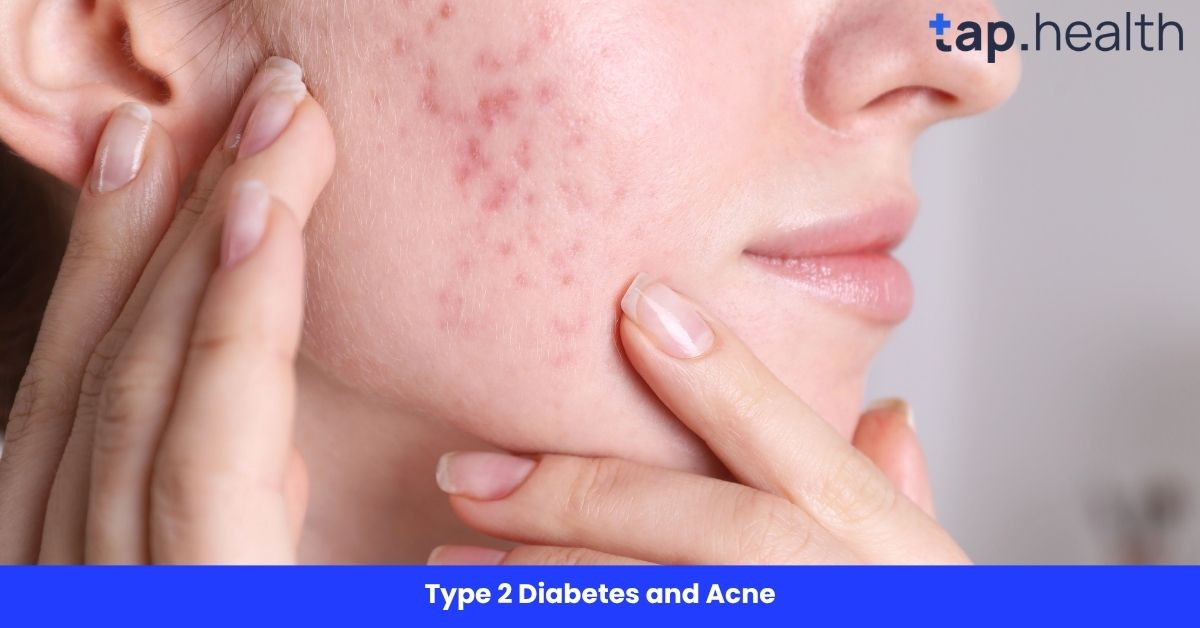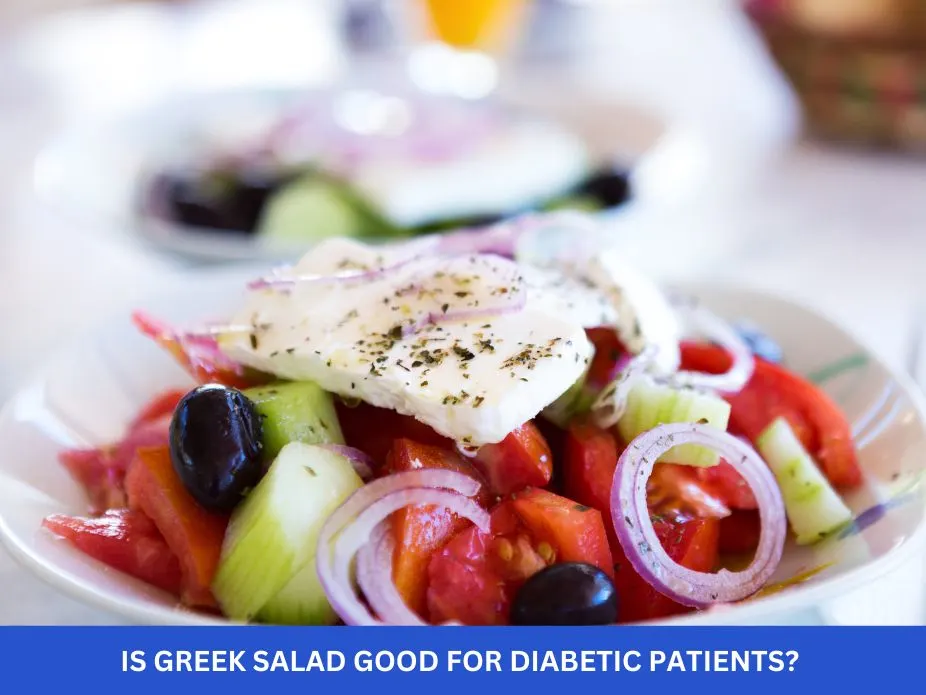Type 2 diabetes is a growing health concern in India and around the world. This chronic condition occurs when the body becomes resistant to insulin, or the pancreas doesn’t produce enough insulin, leading to high blood sugar levels. Managing blood sugar is vital for overall health, and it impacts not only our internal organs but also the skin. Many people with type 2 diabetes struggle with acne, which can often be misunderstood as a condition unrelated to diabetes. However, there are distinct links between type 2 diabetes and acne, and understanding this relationship can help individuals better manage both conditions.
In this blog post, we will explore the causes, effects, and solutions for acne in people with type 2 diabetes. We will discuss how blood sugar levels, insulin resistance, diet, stress, and other factors influence skin health and acne development. Furthermore, we will provide practical tips for managing acne when living with type 2 diabetes.
What Causes Acne in People with Type 2 Diabetes?
1. Insulin Resistance and Acne
The primary issue in type 2 diabetes is insulin resistance, where the body’s cells don’t respond to insulin properly. As a result, the body produces more insulin to compensate for this resistance. This excess insulin can cause a variety of skin problems, including acne. High insulin levels can trigger the production of sebum (skin oil) by the sebaceous glands, which leads to clogged pores and acne outbreaks.
2. High Blood Sugar Levels
When blood sugar levels are not properly controlled, they can become elevated (hyperglycemia). High blood sugar levels lead to inflammation in the body, which affects the skin as well. Inflammation can cause the skin to break out in pimples and other acne-related conditions. The excess sugar in the bloodstream also contributes to the clogging of pores, further worsening acne.
3. Hormonal Imbalances Due to Diabetes
Hormonal imbalances play a major role in acne development. People with type 2 diabetes often experience fluctuations in hormones, especially insulin, cortisol, and androgens. Insulin, in particular, can cause an increase in the production of oils in the skin, contributing to clogged pores and acne. Increased cortisol, often a result of stress, can also lead to acne breakouts. These hormonal imbalances can make people with type 2 diabetes more prone to skin issues like acne.
4. Medications and Treatments for Type 2 Diabetes
Some medications used to treat type 2 diabetes can cause acne as a side effect. Drugs like corticosteroids and certain oral contraceptives may exacerbate acne in susceptible individuals. If you’re taking medication for type 2 diabetes, it’s important to discuss any skin concerns with your doctor. They may suggest adjusting your medication or adding topical treatments to help manage acne.
How Does Type 2 Diabetes Affect Skin Health?
1. Dry Skin and Dehydration
People with type 2 diabetes often suffer from dry skin due to the body’s inability to properly hydrate the skin. When blood sugar levels are poorly controlled, the body loses more moisture, leading to dry, flaky skin. Dry skin can cause further irritation and may lead to the development of acne. It’s important to stay hydrated and use a good moisturizer to prevent the skin from becoming too dry, which could lead to acne flare-ups.
2. Poor Healing of Skin Wounds
One of the complications of type 2 diabetes is poor circulation, which slows down the healing process of skin wounds. Acne, particularly severe forms like cystic acne, can leave scars if not treated properly. Since the skin heals slower in people with diabetes, acne scars may linger longer. Proper skincare and timely treatment of acne are crucial to avoid permanent scarring.
3. Increased Risk of Infections
When acne is not treated properly, it can lead to infections. For people with type 2 diabetes, infections are more common and can be harder to treat due to compromised immune function. Bacteria can thrive in clogged pores, leading to further skin issues. If left untreated, acne-related infections can worsen and require medical intervention.
Can Type 2 Diabetes Cause Acne in Teenagers and Young Adults?
Yes, teenagers and young adults with type 2 diabetes can experience more severe acne. Adolescence is already a time of heightened hormonal changes, which naturally increases the likelihood of acne. For individuals with type 2 diabetes, the added complications of insulin resistance, high blood sugar, and medication side effects can further exacerbate acne outbreaks. Additionally, managing diabetes during this period of growth can be stressful, which may also contribute to acne flare-ups due to higher cortisol levels.
How Can You Prevent and Manage Acne with Type 2 Diabetes?
1. Control Your Blood Sugar Levels
The first and most important step in managing acne with type 2 diabetes is to keep your blood sugar levels within a healthy range. This can be done by following a balanced diet, monitoring blood sugar levels regularly, and taking insulin or other prescribed medications as directed by your doctor. By keeping blood sugar levels stable, you can reduce inflammation and prevent acne from worsening.
2. Follow a Skincare Routine for Acne-Prone Skin
Having a consistent skincare routine is key to managing acne. Choose a mild, non-comedogenic cleanser that will not clog your pores. Avoid harsh scrubs or products with high alcohol content, as they can irritate the skin and worsen acne. After cleansing, use a gentle moisturizer to keep the skin hydrated. Additionally, use an acne treatment containing ingredients like salicylic acid, benzoyl peroxide, or retinoids to treat and prevent breakouts. Always check with your dermatologist before trying new skincare products, especially if you have sensitive skin due to diabetes.
3. Maintain a Healthy Diet
A healthy diet can help regulate blood sugar and support skin health. Choose foods that are low in glycemic index (GI), as they have a less dramatic effect on blood sugar levels. These include whole grains, fruits, vegetables, and lean proteins. Avoid sugary and processed foods, as they can cause blood sugar spikes and contribute to acne. Drinking plenty of water and reducing the intake of caffeinated drinks can also help keep your skin hydrated and healthy.
4. Manage Stress Effectively
Stress is a known trigger for acne, particularly due to the release of cortisol, a stress hormone. Managing stress through activities like meditation, yoga, or regular physical exercise can help keep acne under control. Additionally, managing stress will benefit your overall health, including blood sugar levels, which is essential for both diabetes and skin health.
5. Stay Hydrated and Avoid Dehydration
As mentioned earlier, dehydration is common in individuals with type 2 diabetes. Dehydrated skin can worsen acne and make it more difficult to manage. Drinking adequate water throughout the day helps to keep the skin hydrated and supports overall skin health. A well-hydrated body is better equipped to fight off acne-causing bacteria and promote healing.
6. Consult a Dermatologist
If acne persists or worsens despite your efforts, it’s essential to consult a dermatologist. A dermatologist can help you find the best treatment options tailored to your skin type and diabetes management. Topical treatments, oral medications, or even light therapies may be recommended for severe acne. Your doctor may also suggest adjustments to your diabetes medication if they believe it could be contributing to your acne.
Real-Life Scenario
Consider a person in their mid-30s managing Type 2 diabetes who begins noticing persistent acne breakouts. Despite using skincare products, the acne doesn’t improve until they focus on diet and blood sugar control. After reducing sugary foods, increasing fiber intake, and staying hydrated, their blood sugar stabilizes — and so does their skin condition.
Expert Contribution
According to dermatologists and endocrinologists, insulin resistance plays a key role in the link between Type 2 diabetes and acne. High glycemic diets (rich in refined carbs and sugars) can cause spikes in insulin, leading to excess sebum production and inflammation.
Experts recommend:
- Eating low-glycemic foods such as whole grains, vegetables, and lean proteins.
- Managing stress and sleep, as both can trigger hormonal imbalances.
- Consulting both a dermatologist and diabetologist for an integrated treatment plan.
Recommendations Grounded in Proven Research and Facts
- Follow a low-glycemic diet – Studies show that reducing refined sugars and processed foods can significantly improve acne and stabilize insulin levels.
- Stay hydrated – Proper hydration supports skin detoxification and blood sugar regulation.
- Monitor blood sugar regularly – Consistent glucose control helps reduce inflammation and prevent acne flare-ups.
- Incorporate omega-3-rich foods – Salmon, walnuts, and flaxseeds may help lower inflammation.
- Avoid heavy, oily skincare products – Choose non-comedogenic and gentle cleansers suitable for sensitive skin.
Frequently Asked Questions (FAQs) on Type 2 Diabetes and Acne
Q1: Can type 2 diabetes cause acne?
Yes, type 2 diabetes can contribute to acne due to factors like insulin resistance, high blood sugar levels, and hormonal imbalances. These factors can increase oil production, clog pores, and cause inflammation in the skin, leading to acne breakouts.
Q2: How can I control acne caused by type 2 diabetes?
The key to controlling acne with type 2 diabetes is managing blood sugar levels effectively. Maintaining stable blood sugar through a healthy diet, regular exercise, and proper medication can help prevent acne flare-ups. Additionally, following a gentle skincare routine and staying hydrated will support skin health.
Q3: Is acne treatment different for people with diabetes?
Yes, acne treatment for people with diabetes may need to be adjusted. It’s important to use gentle, non-comedogenic products that won’t irritate the skin. People with diabetes should consult a dermatologist to ensure their acne treatment doesn’t interfere with their diabetes medications or skin condition.
Q4: Are there specific foods to avoid to prevent acne in people with type 2 diabetes?
Yes, people with type 2 diabetes should avoid high glycemic index foods like sugary snacks, white bread, and processed foods. These foods can cause blood sugar spikes, which may contribute to acne. Opting for low GI foods such as whole grains, vegetables, and fruits can help maintain stable blood sugar and support skin health.
Q5: Can stress make acne worse for individuals with type 2 diabetes?
Yes, stress can trigger acne breakouts by increasing cortisol levels, which can promote oil production in the skin. Since stress can also affect blood sugar control, managing stress through relaxation techniques and physical activities is beneficial for both diabetes management and acne prevention.
Conclusion
Type 2 diabetes and acne are linked through several factors, including insulin resistance, high blood sugar, and hormonal imbalances. While acne can be a frustrating condition to deal with, managing your blood sugar levels, following a proper skincare routine, and maintaining a healthy lifestyle can help control both your diabetes and acne. By understanding the connection and taking proactive steps, individuals with type 2 diabetes can enjoy healthier skin and better overall well-being.
Remember, always consult with a healthcare provider or dermatologist for personalized advice and treatment options suited to your unique needs.



